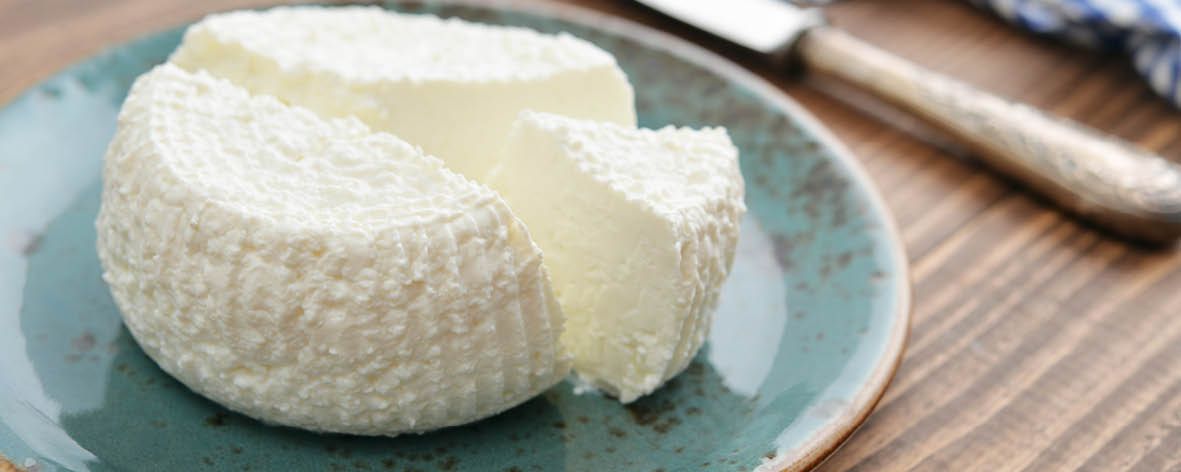All you need to know about … ricotta

Soft, fluffy and super versatile, ricotta is a fresh cheese most commonly made from cow’s milk. “Ricotta” means “recooked” in Italian and the name derives from the way that ricotta is traditionally made. And if you’ve always wanted to be a cheesemaker, there’s a quick and easy way to make ricotta at home; it’s a great way to get the kids involved in the kitchen and the perfect way to introduce them to ricotta as part of their diet. Read on to learn more about how ricotta is made, used and how to make your own ricotta.
If you remember the nursery rhyme about Little Miss Muffett you’ll know that she sat on her tuffet eating her curds and whey. But what exactly are curds and whey? Well, simply, they are a product of cheese-making. Cheese is made of curds which are made by coagulating or curdling milk. This is achieved by adding an acid like vinegar or citrus juice to milk which then causes the proteins in the milk to form solid masses or curds. The curds are pressed and drained to make different types of cheese and the liquid that remains is called the whey.
Ricotta is traditionally made by heating the whey, usually after adding some whole milk and additional acid. This causes the small amount of curds that are left in the whey to thicken and become more solid. They are then strained through cheesecloth to remove any remaining liquid and the solids that remain are ricotta.
Although strained, ricotta retains a lovely moistness that makes it fantastic to use in cooking both sweet and savoury dishes. Try it as a substitute for yoghurt or added to soup for an instant hit of creaminess, or use it in lasagne or to stuff homemade ravioli or cannelloni. Ricotta is ideal for making dips flavoured with herbs and spices and it is amazing paired with honey in sweet dishes. It is also an excellent ingredient in baking – think cakes, doughnuts, cheesecakes and desserts.
Making ricotta at home is easy and an ideal introduction to fresh cheesemaking. To make it you will need 2 litres of full fat milk, 1 teaspoon of salt and 1/3 of a cup of lemon juice. Bring the milk to the boil in a saucepan over high heat. Remove from the heat and add lemon juice and salt. Leave to stand for 10 minutes or until the milk separates into small curds. Next line a strainer with muslin set over a bowl (to catch the whey) and gently pour the curds out of the saucepan and into the strainer. Leave to drain for 15 to 20 minutes. Ricotta can be served warm and fresh immediately after making it (try it smeared on toast, drizzled with honey and topped with cracked black pepper or chilli flakes), or in an airtight container in the fridge for up to ten days. Don’t throw away the whey that you catch from draining. This can be used in baking as a substitute for milk or added to soups or casseroles to add creaminess. Keep the whey for up to a week in the fridge or freeze it for later use.

